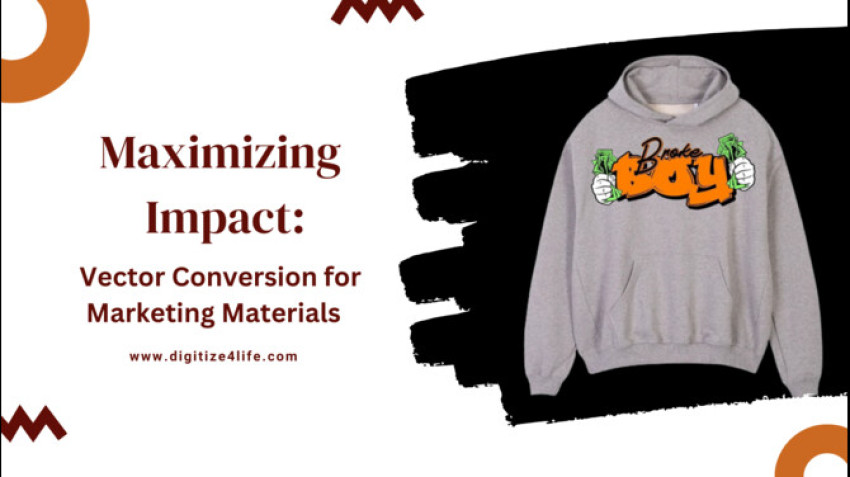
Dive into the future of embroidery with our latest blog! Explore the hottest digitizing trends of 2024, from futuristic designs to timeless classics. Elevate your stitching game and stay ahead of the curve! #EmbroideryTrends #2024Designs #DigitalEmbroidery
Introduction:
In the dynamic world of marketing, visual appeal is paramount. Whether it's a sleek logo, vibrant graphics, or stunning advertisements, the quality of your visuals can make or break your brand. In this blog post, we explore the game-changing technique of vector conversion and how it can elevate your marketing materials to new heights.
First of all,
In the ever-changing realm of marketing, aesthetic appeal is crucial. Your company's visuals, whether they be eye-catching ads, colorful graphics, or a simple logo, may make or destroy it. This blog post delves into the transformative process of vector conversion and demonstrates how it may significantly enhance your marketing collateral.
Comprehending Vector Conversion: Vector conversion is the process of converting raster images into scalable vector graphics (SVG). Vector graphics are sharp and clear at any scale, unlike raster images, which are pixel-based and can lose quality when resized. For marketers looking to produce powerful images that work seamlessly across several devices, this method is revolutionary.
Advantages of Marketing with Vector Conversion:
1. Scalability and Adaptability: Vector images are ideal for a variety of marketing materials such as banners, logos, and promotional content across several platforms since they can be stretched indefinitely without sacrificing quality.
2. Improved Clarity and Sharpness: Vector graphics guarantee crisp lines and distinct details, giving your marketing materials a polished and businesslike appearance.
3. Versatility in Design: The conversion of vectors to a vector format increases design versatility. The ease of manipulation and editing of elements offers countless opportunities for artistic expression.
4. Brand Consistency: Establishing a trustworthy brand requires a constant image. Using vector graphics makes it easier to correctly replicate your brand's characteristics in all of your marketing collateral.
5. Smaller File Sizes: Generally speaking, vector files are smaller than their raster equivalents, which helps websites load more quickly and gives users a more seamless online experience.
How to Create Vectors from Raster Images:
1. Select the Correct program: For efficient conversion, use vector graphics programs like Adobe Illustrator, CorelDRAW, or free equivalents like Inkscape.
2. Trace the Image: To transform raster images into vector graphics, use the software's tracing features. To obtain the appropriate degree of precision and detail, change the settings.
3. Edit and Refine: After the first conversion, edit the vector image to make sure it complies with your brand rules by modifying the colors, curves, and other features.
4. Save in Multiple Formats: To guarantee compatibility with multiple marketing platforms, save your vector files in a variety of formats (SVG, AI, EPS).




